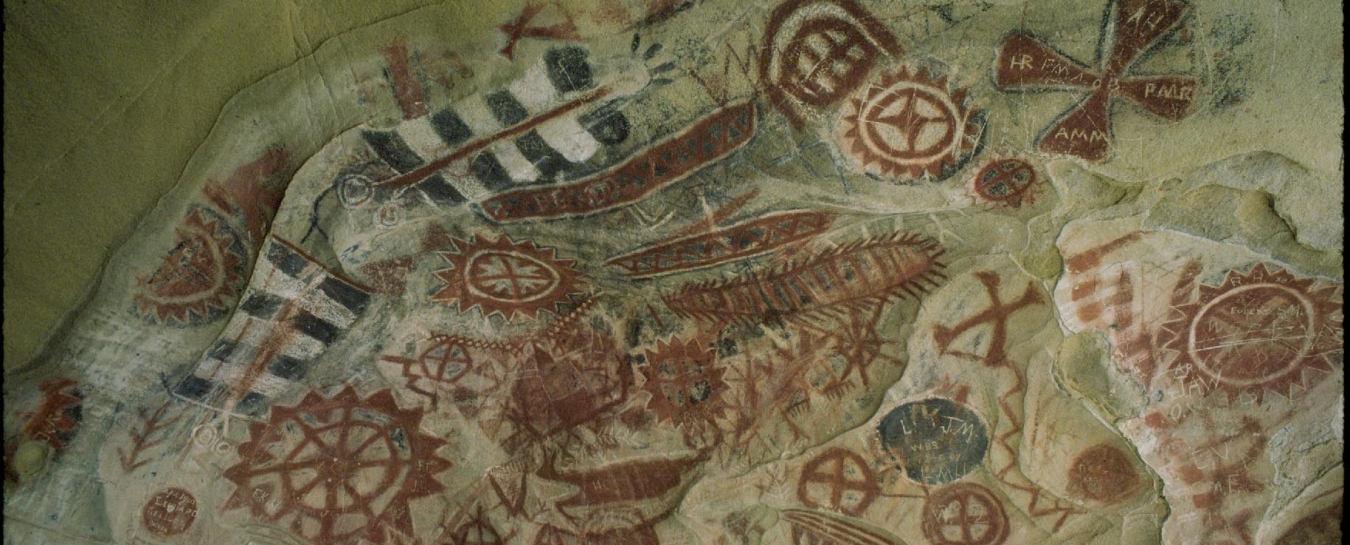
Cave Painting
Chumash Rock Paintings among the most elaborate and colorful in the world!
Why were the paintings made?
Neither as art to be admired nor as simple graffiti -- they were probably made for religious reasons. Shamans, or Chumash priests, are thought to have made these paintings to influence supernatural beings and forces to intervene in human affairs. We can only guess what these mysterious symbols meant to their creators, but they may represent mythic figures, natural phenomena, or abstract concepts.
What did the colors come from?
Paint pigments came mostly from minerals. Red was made from an iron oxide called hematite, or red ochre. White came from gypsum or diatomaceous earth. Black was made from charcoal or from manganese oxide. These ground-up pigments were mixed with a binder -- water, animal fat, or plant juices -- to make them into paint, which was applied to the rock with the fingers or with brushes made from animal tails. Chalk-like lines made with dry lumps of pigment can also be seen at some sites.
How old are the paintings?
It's hard to tell. Most are probably less than 1,000 years old, and some are relatively recent. At Painted Cave (shown in the photo), the complex designs were painted at different times, often over those done previously. Without damaging the delicate paintings, experts have collected tiny pigment samples from the solid black disk outlined in white, for dating and analysis. The results are consistent with one theory that this figure may represent a solar eclipse that occurred on November 24, 1677. Other figures were painted before and after that, in styles that changed through time.
Where can I see Chumash rock paintings?
There are many sites, but the fragile paintings can be easily damaged by thoughtless visitors. Rock paintings remain sacred to Chumash people today. Because of the importance of preserving this irreplaceable cultural heritage, the Museum and state and federal agencies do not give out rock art site locations. One exception is Painted Cave State Historic Park near Santa Barbara.
About This Site
This website contains resources about Chumash traditional cultures collected by Santa Barbara Museum of Natural History staff for the use of teachers and students. Visit the other pages to learn more:


